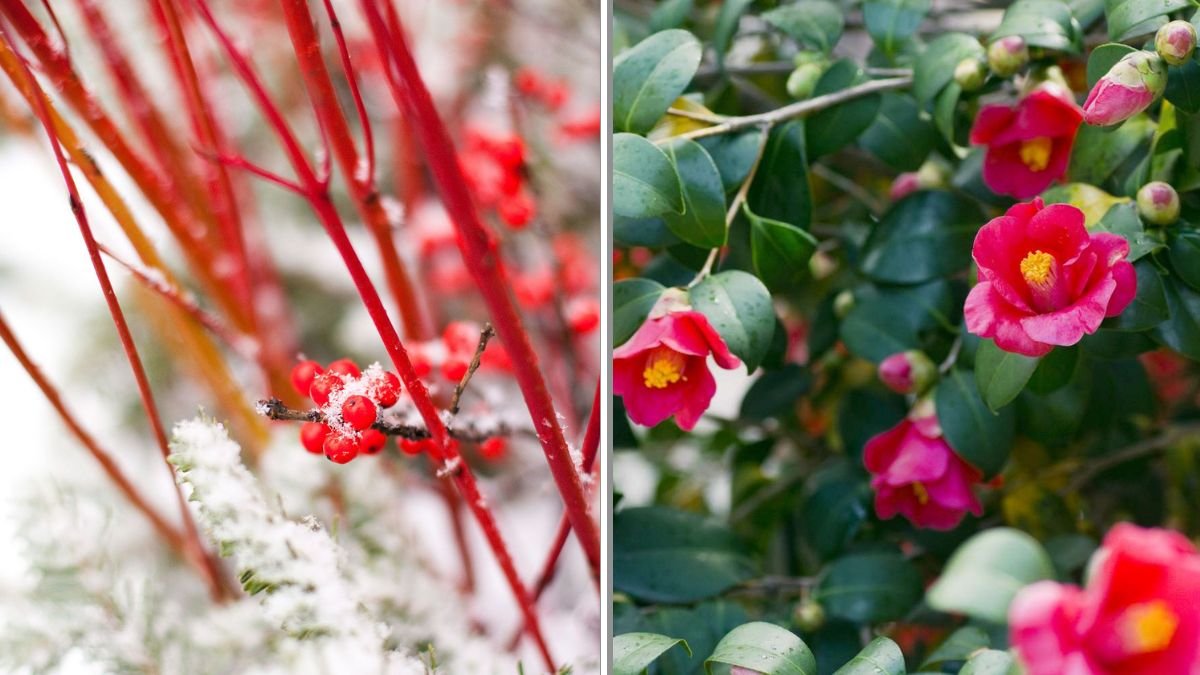Winter doesn’t have to mean a dull, gray landscape. While many plants go dormant, certain shrubs can brighten your yard with bold foliage, vibrant stems, fragrant flowers, or colorful berries—even during the coldest months. By strategically planting these resilient shrubs, you can enjoy year-round beauty and ensure your garden looks alive when everything else is resting.
Here are 10 shrubs that add color in winter, along with tips on how to care for them.
1. Red Twig Dogwood (Cornus sericea)
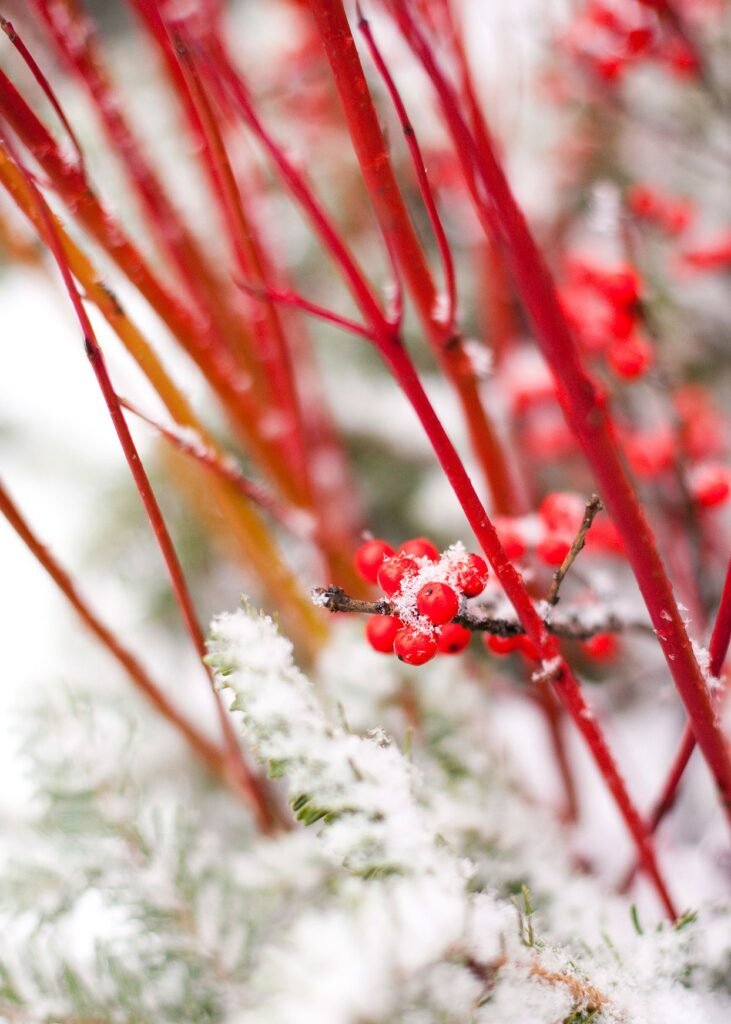
Few shrubs make as striking a statement in winter as red twig dogwood. After the leaves fall, the bare stems glow a brilliant red against snow or muted landscapes.
- Hardiness zones: 3–8
- Height: 6–9 feet
- Color feature: Fiery red stems
- Care tip: For the brightest color, prune older stems in early spring, as new growth is the most vibrant.
2. Winterberry Holly (Ilex verticillata)
This deciduous holly sheds its leaves in fall, but its bright red berries persist throughout winter, offering food for birds and festive garden cheer.
- Hardiness zones: 3–9
- Height: 6–10 feet
- Color feature: Bright red berries
- Care tip: You’ll need both male and female plants for berry production.
3. Witch Hazel (Hamamelis spp.)
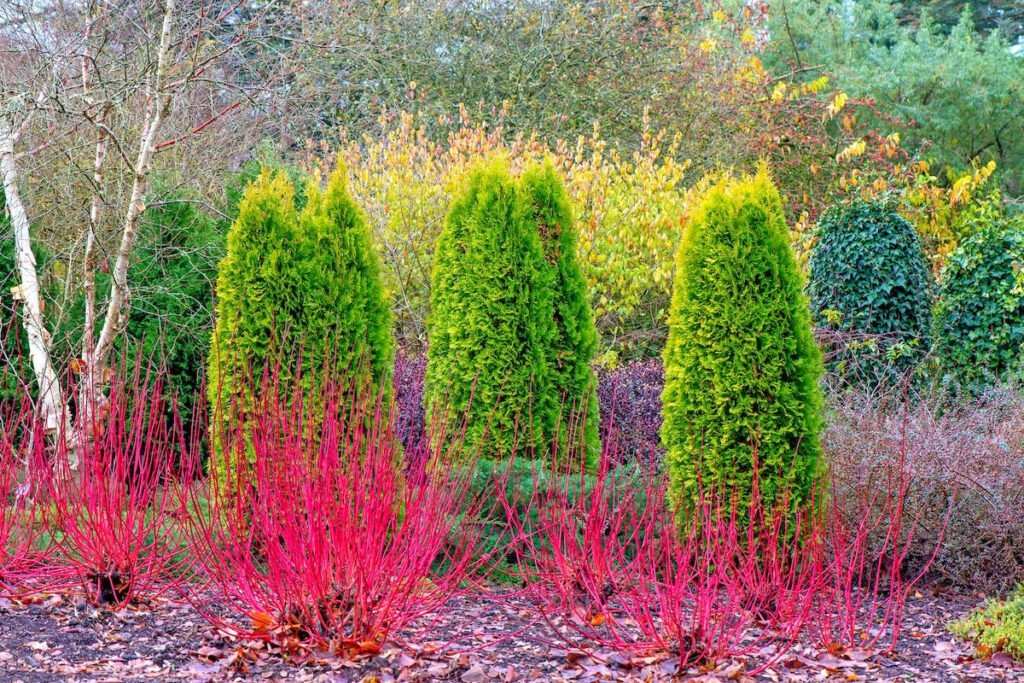
Known for its fragrant, ribbon-like yellow, orange, or red flowers, witch hazel blooms in the dead of winter when little else dares.
- Hardiness zones: 3–9
- Height: 10–20 feet
- Color feature: Spidery, colorful winter flowers
- Care tip: Plant in full sun to partial shade with well-drained soil.
4. Camellia (Camellia japonica)
Camellias are prized for their rose-like blooms that open in shades of pink, red, or white from late fall through winter.
- Hardiness zones: 7–9
- Height: 6–12 feet
- Color feature: Showy winter flowers
- Care tip: Provide acidic, well-draining soil and shelter from harsh winds.
5. Mahonia (Mahonia aquifolium)
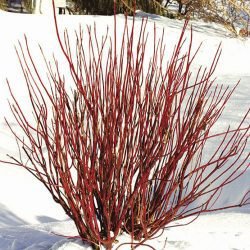
Also called Oregon grape, mahonia keeps its leathery, holly-like leaves year-round. In late winter, clusters of fragrant yellow flowers emerge, followed by blue berries in spring.
- Hardiness zones: 5–9
- Height: 3–10 feet
- Color feature: Evergreen foliage and winter flowers
- Care tip: Thrives in partial to full shade, making it great for woodland gardens.
6. Firethorn (Pyracantha coccinea)
This evergreen shrub lives up to its name with clusters of bright orange or red berries that last well into winter. Its glossy green leaves add to the display.
- Hardiness zones: 6–9
- Height: 6–18 feet
- Color feature: Long-lasting berries
- Care tip: Plant in full sun and prune to maintain shape; beware of its sharp thorns.
7. Japanese Pieris (Pieris japonica)
This elegant shrub offers year-round glossy green foliage that turns bronze or red in winter, plus cascading clusters of bell-shaped flowers in late winter to early spring.
- Hardiness zones: 5–8
- Height: 8–12 feet
- Color feature: Evergreen foliage and early blooms
- Care tip: Prefers acidic, well-drained soil and protection from hot afternoon sun.
8. Viburnum (Viburnum tinus)
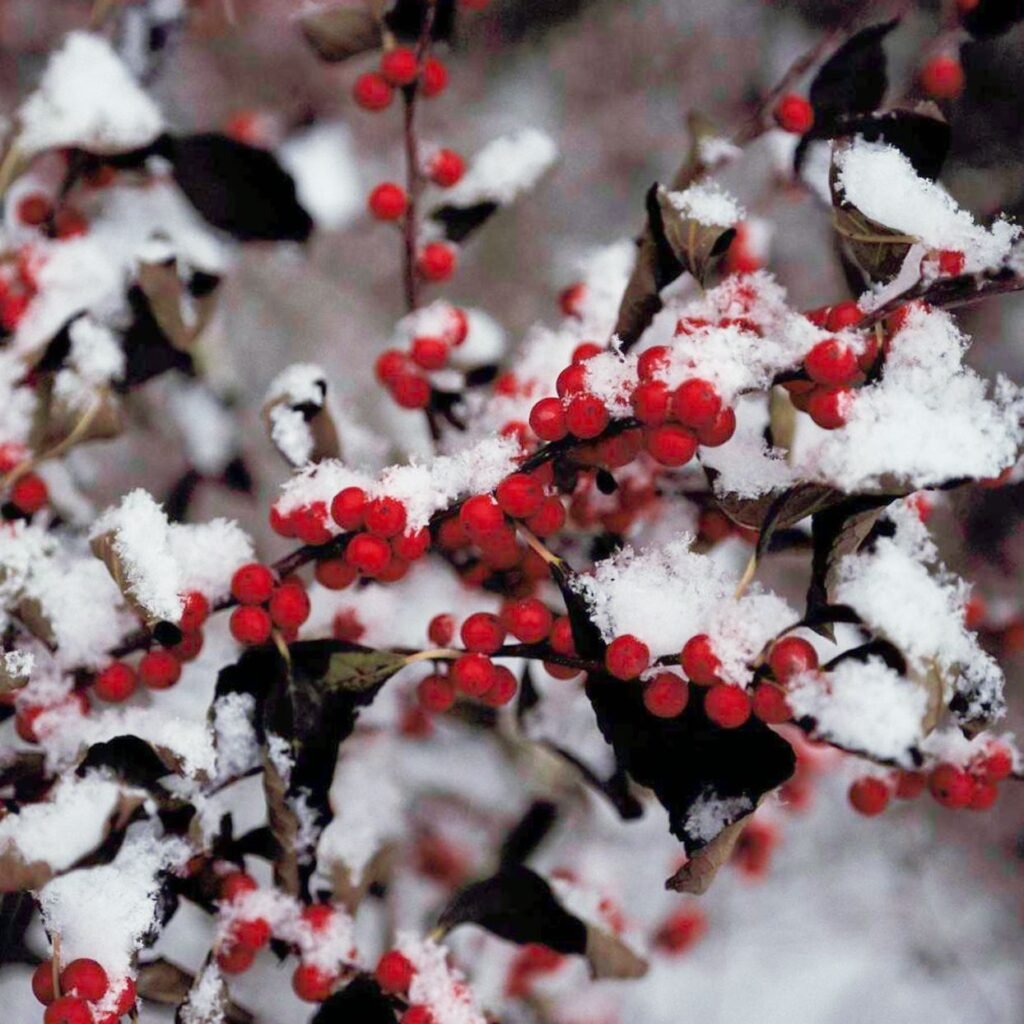
Some viburnum varieties bloom in late winter, producing clusters of pink or white flowers that stand out against evergreen leaves. Many also develop colorful berries later.
- Hardiness zones: 7–10
- Height: 6–12 feet
- Color feature: Winter blossoms and berries
- Care tip: Plant in full sun for best flowering and fruiting.
9. Heather (Erica carnea)
Winter heath, a type of heather, is a low-growing shrub that produces carpets of pink, purple, or white flowers from late winter into spring, even when snow is still on the ground.
- Hardiness zones: 5–7
- Height: 1–2 feet
- Color feature: Winter blooms in jewel tones
- Care tip: Needs acidic, well-drained soil and full sun.
10. Boxwood (Buxus sempervirens)
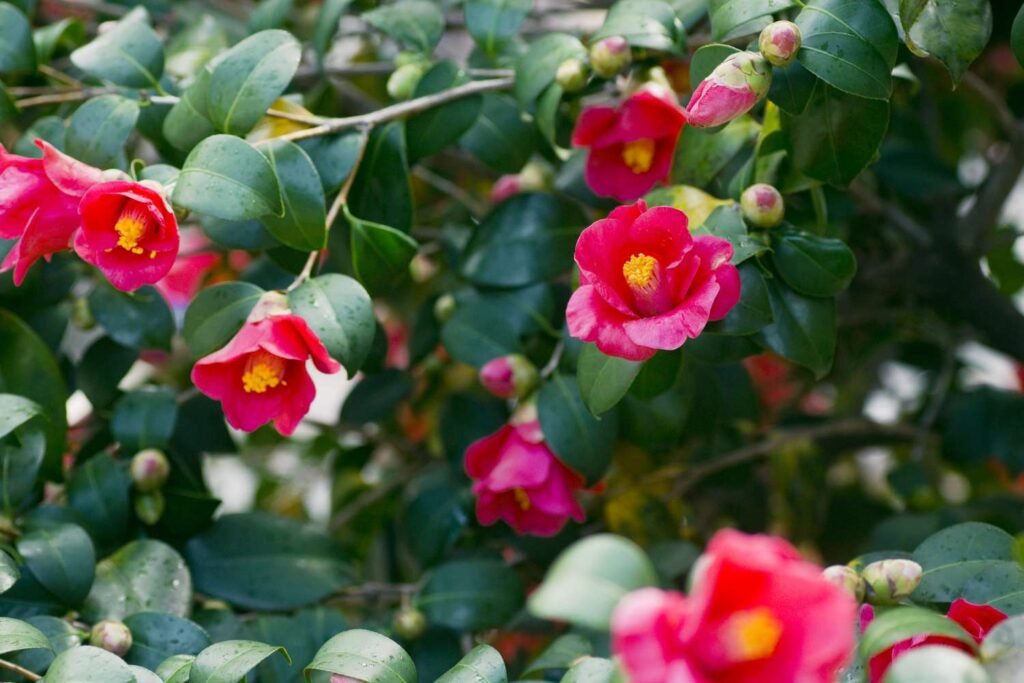
Though subtle compared to flowering shrubs, boxwood shines in winter thanks to its dense evergreen foliage, which can be clipped into formal shapes or hedges. It provides year-round structure and deep green color.
- Hardiness zones: 5–9
- Height: 2–20 feet (depending on variety)
- Color feature: Evergreen foliage
- Care tip: Protect from winter windburn by wrapping or placing in sheltered spots.
Designing with Winter Color
To maximize visual impact, combine different types of shrubs for a layered effect:
- Pair vibrant stems (like red twig dogwood) with evergreens (like boxwood).
- Use berry-producing shrubs (like winterberry) for both wildlife value and bright color.
- Add flowering shrubs (like camellias or witch hazel) for surprise winter blooms.
By mixing shrubs with different textures, colors, and bloom times, your winter garden will feel alive even when other plants sleep.
Final Thoughts
A colorful winter garden is not just possible—it can be breathtaking. From fiery dogwood stems to jewel-toned berries and unexpected winter blooms, these 10 shrubs ensure your landscape shines even in the coldest months. With the right care and placement, they’ll provide beauty, structure, and interest year after year.
Instead of dreading the winter garden, imagine it: bright berries against snow, golden flowers blooming in January, and glossy green leaves holding strong until spring returns. With the right shrubs, your garden never has to look bare again.
